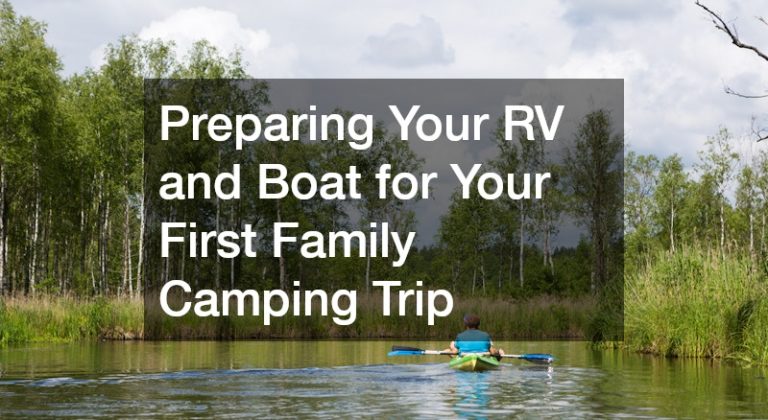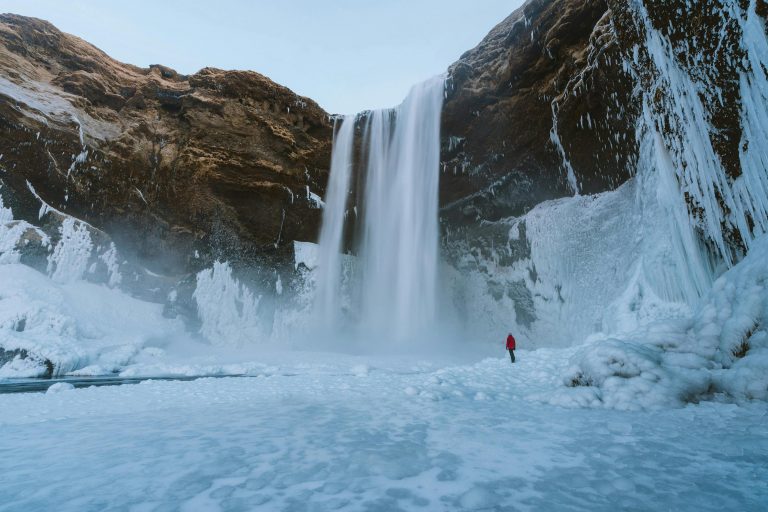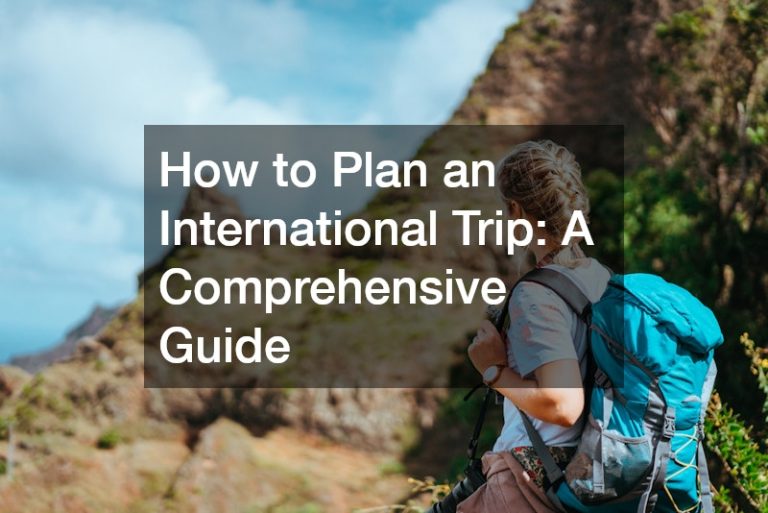Embarking on a solo road trip is an exciting adventure, offering the freedom to explore at your own pace. However, before you hit the open road, it’s essential to ensure your vehicle is in top condition. Proper preparation not only ensures your safety but also enhances your overall experience. Here’s a comprehensive guide on how to prepare your vehicle when you’re going on a solo road trip.

Conduct a Thorough Inspection
Before starting your journey, perform a detailed inspection of your vehicle. This is the first step to identifying any potential issues that might arise during your trip. Check the tire pressure and tread depth to ensure they’re within safe limits. Uneven tread wear can indicate alignment issues, which might require a visit to an auto repair shop. Don’t forget to inspect your spare tire—it’s a lifesaver in case of a flat. Additionally, look for visible damage on the tires, such as cuts or bulges, which could lead to a blowout. Rotate the tires if necessary to promote even wear and extend their lifespan. If your vehicle has a tire pressure monitoring system (TPMS), verify that it’s functioning correctly.
Check and Replace Fluids
Your car’s fluids are crucial for smooth operation. Check the oil level and condition, as old oil can affect engine performance. Top off your coolant, brake fluid, and windshield washer fluid. Going on a solo road trip often means driving through different climates, making it essential to ensure the vehicle’s fluids can handle extreme temperatures. Dirty fluids can lead to engine overheating or poor performance, so consider scheduling a full fluid replacement if you’re due for one. Remember to check for any signs of leaks under the vehicle, as unnoticed leaks can result in fluid shortages while on the road.
While checking fluids, don’t overlook the transmission fluid and power steering fluid. If you’re unsure about any of these, consult a trusted auto repair shop to help you prepare. Additionally, replace the fuel filter if it hasn’t been changed recently to avoid clogs and improve fuel efficiency.
Test Your Brakes
Functioning brakes are non-negotiable when going on a solo road trip. Listen for any squeaking or grinding noises that could indicate worn brake pads or other issues. If you’re unsure, schedule an auto brake service to inspect and address any concerns. A professional service ensures your brakes will perform reliably on mountainous roads, highways, or stop-and-go traffic. Check the brake fluid level, as low levels can signal a leak or worn brake pads. Also, inspect the brake rotors for warping or excessive wear, which could affect stopping power. Ensuring proper brake performance is vital for both safety and confidence on the road.
Assess Your Battery
Your car battery is another critical component. Check for corrosion on the terminals and ensure the battery is fully charged. A weak battery can leave you stranded in remote areas. Many auto shops provide free battery testing, which is worth taking advantage of before heading out. Clean the terminals if needed and secure the connections tightly. If your battery is over three years old, consider replacing it to reduce the risk of failure during your trip. Additionally, invest in a portable jump starter for emergencies, especially if you plan to travel through less-populated areas.

Inspect Lights and Wipers
Visibility is essential when you’re going on a solo road trip. Ensure your headlights, brake lights, and turn signals are working correctly. If your headlights appear dim, consider replacing the bulbs. Your windshield wipers should also be in good condition to handle rain or debris. If they leave streaks, it’s time for a replacement. For any chips or cracks, consider windshield repair to prevent the damage from worsening. Additionally, check your high beams and fog lights to ensure they’re functioning, as they’re crucial for night driving and poor weather conditions. Apply a glass treatment to your windshield to repel water and improve visibility during heavy rain.
Stock Up on Essentials
Having the right supplies is essential when going on a solo road trip. A well-stocked emergency kit should include:
- First-aid supplies
- Jumper cables
- Flashlight with extra batteries
- Basic tools and duct tape
- Portable phone charger
Additionally, carry a gallon of water for emergencies and a stash of non-perishable snacks. It’s also wise to have a list of local automobile insurance company contacts in case of an accident or roadside issue. Consider adding items like a tire repair kit, a portable air compressor, and a thermal blanket to your emergency kit. These can prove invaluable if you encounter car trouble in remote areas or extreme weather conditions.
Test Your Air Conditioning
Driving long distances without functioning air conditioning can quickly turn uncomfortable. Ensure your auto air conditioning system is working correctly before you leave. If you notice it’s not cooling effectively or making unusual noises, have it checked by a professional. Proper airflow can make all the difference, especially when going on a solo road trip in the summer season. Additionally, clean or replace the cabin air filter to improve air quality inside the vehicle. If you’re traveling through hot climates, verify that the refrigerant levels are adequate to maintain a cool and comfortable interior.
Plan for Emergencies
Even with thorough preparation, unforeseen issues can arise. Research and save contact information for auto towing services along your route. Having a reliable towing company on speed dial provides peace of mind if you face a breakdown. Additionally, know the locations of gas stations and rest stops to avoid running low on fuel in remote areas. Consider enrolling in a roadside assistance program, which can offer additional benefits such as tire changes, fuel delivery, and lockout services. Knowing where to turn during an emergency ensures you’ll be back on the road as quickly as possible.

Organize Your Documents
Before going on a solo road trip, ensure all your essential documents are up to date and easily accessible. These include:
- Driver’s license
- Vehicle registration
- Insurance card
- Roadside assistance membership details
Having these ready saves time and stress if you’re stopped by law enforcement or require assistance. Additionally, keep digital copies of these documents on your phone or email for backup. This can be helpful if the originals are lost or damaged during your trip. It’s also a good idea to include a copy of your trip itinerary and emergency contact numbers.
Check Your Car Key
Losing your car key during a solo trip can be a major setback. Bring a spare key and keep it in a safe but separate location. If you’re prone to misplacing items, research local car key replacement services along your route. Knowing where to turn for help can save valuable time if an emergency arises. Additionally, consider investing in a key finder device to attach to your keychain, making it easier to locate misplaced keys. Having a secure storage option, such as a magnetic key box, can also provide extra security during your travels.
Invest in Car Detailing
A clean car isn’t just about aesthetics—it’s also about comfort and safety. Automotive detailing services can make a significant difference by removing debris and grime from your vehicle. Dust-free windows improve visibility, while a tidy interior creates a more pleasant driving environment. Contact a reputable car detailing company before you leave to ensure your car is ready for going on a solo road trip. Request a thorough cleaning of vents and upholstery to improve air quality and remove allergens. Waxing your car can also protect the paint from debris and harsh weather conditions, keeping it looking great throughout your journey.
Organize and Pack Strategically
Packing your car before going on a solo road trip requires strategy. Keep frequently used items, like snacks, water, and maps, within easy reach. Store heavier items low and toward the center of the car to maintain stability. Overloading your vehicle can strain its suspension, so pack only what you need. Remember to include essential car parts like fuses, bulbs, and wiper blades in case of minor repairs. Use storage organizers or bins to keep items secure and prevent them from shifting during the drive. Label your bins for quick access, and avoid placing heavy objects on top of fragile items.

Map Your Route
A detailed plan ensures you won’t run into unnecessary challenges. Use navigation apps to identify construction zones, toll roads, and alternative routes. While GPS is invaluable, also carry a paper map as a backup in case you lose cell service. Additionally, identify nearby auto repair shops along your route in case you need assistance. Plan your stops to include scenic viewpoints or local attractions to make the journey more enjoyable. Having a backup route prepared can also save time if you encounter unexpected road closures or detours.
Monitor Fuel Efficiency
Going on a solo road trip can take a toll on your fuel budget. To improve efficiency, ensure your tires are properly inflated and avoid carrying excess weight. Maintaining a steady speed and using cruise control on highways can also conserve fuel. If you’re driving an older vehicle, consider replacing certain car parts to enhance performance. Regularly monitor your fuel gauge and refuel when you reach half a tank, especially in remote areas. This practice reduces the risk of running out of fuel and provides flexibility in choosing gas stations with better prices.
Stay Connected
Safety is paramount when traveling alone. Keep friends or family informed about your route and expected arrival times. Sharing your live location through phone apps can provide additional peace of mind. If you encounter any trouble, having someone aware of your plans ensures help can reach you quickly. Additionally, carry a portable Wi-Fi hotspot or ensure your phone plan includes coverage for the areas you’re traveling through. This ensures you’re always able to communicate or access navigation tools when needed.
Take Breaks
Driving long distances can be exhausting. Schedule regular breaks to stretch, hydrate, and refocus. Rest stops also offer an opportunity to inspect your vehicle for any signs of trouble. Check your tires, lights, and windshield during each stop to ensure everything remains in good condition. Use breaks to plan the next leg of your journey and recharge mentally. Avoid driving for more than eight hours a day to reduce fatigue and maintain focus behind the wheel.

Secure Proper Insurance
Before your trip, review your policy with your automobile insurance company to understand your coverage. Consider adding roadside assistance if it’s not already included. Adequate coverage ensures you’re prepared for any unexpected incidents on the road. Review the details of your deductible and ensure you have the necessary funds in case of a claim. It’s also a good idea to verify coverage for rental vehicles if you’re using one for the trip.
Prepare for Different Weather Conditions
Going on a solo road trip often span various climates. Ensure your vehicle can handle sudden changes in weather. If you’re traveling through snowy or icy regions, carry tire chains and verify that your tires are suitable for winter driving. In warmer climates, check your cooling system and auto air conditioning to avoid overheating. Pack appropriate clothing and gear for each climate you’ll encounter to stay comfortable and safe. Installing weather-appropriate windshield wipers can also improve visibility in rain or snow.
Know When to Seek Help
No matter how well you prepare, some issues require professional assistance. Familiarize yourself with the locations of auto repair shops along your route. If you experience mechanical problems, don’t hesitate to stop for repairs. Ignoring minor issues can lead to more significant problems down the line. Keep a list of emergency numbers and addresses handy, and don’t hesitate to call for help if you’re in an unsafe situation or unsure about handling a repair yourself.
Preparing your vehicle when you’re going on a solo road trip involves careful planning and attention to detail. By following this guide, you can reduce the chances of encountering problems and focus on enjoying your adventure. So, pack your bags, plan your route, and get ready to hit the road with confidence!








